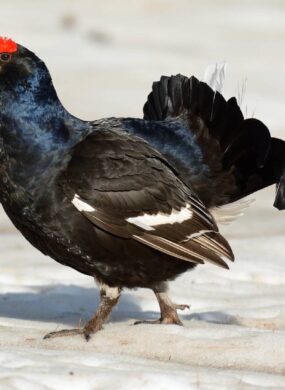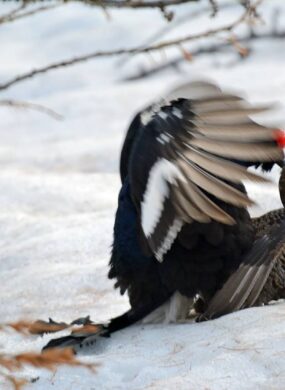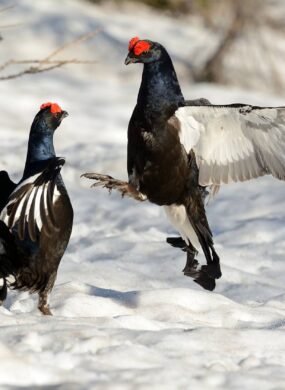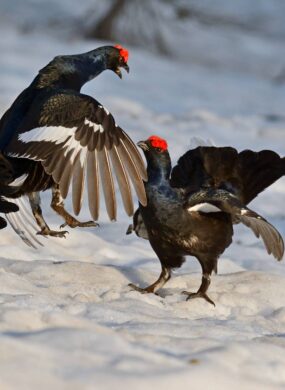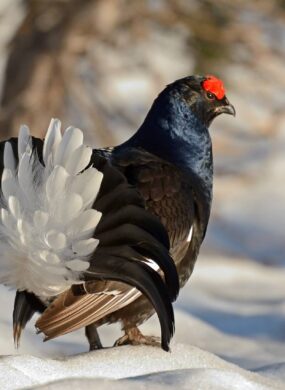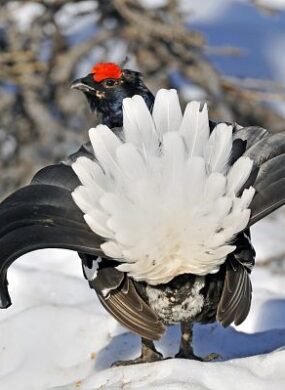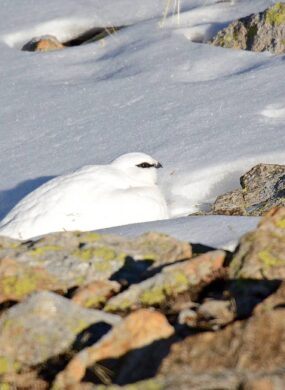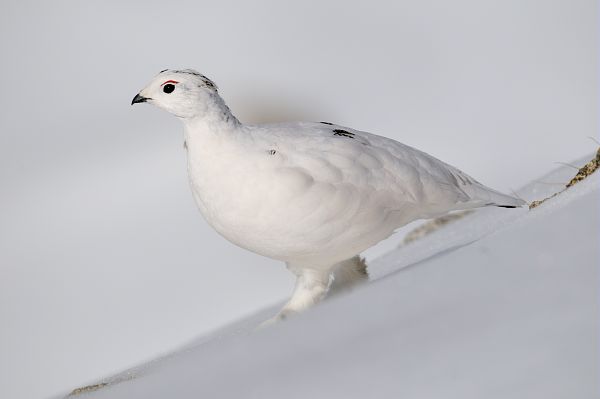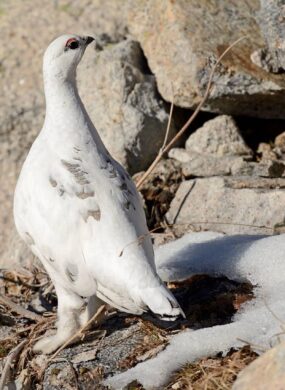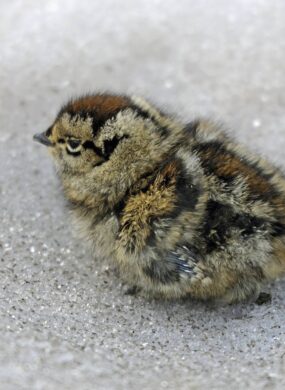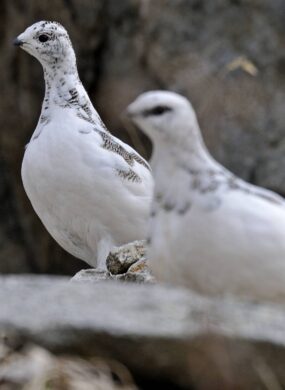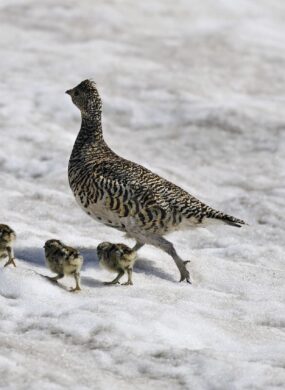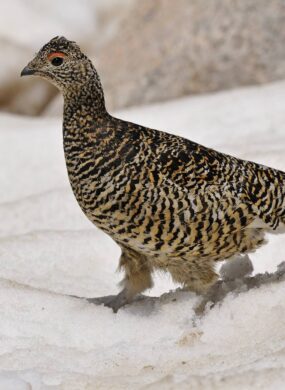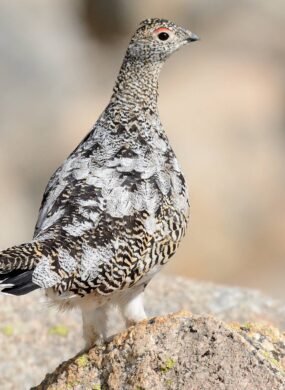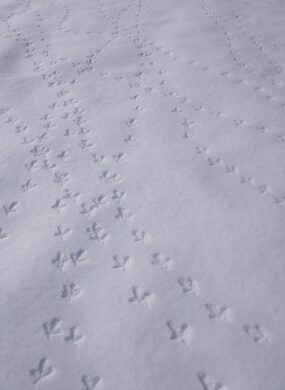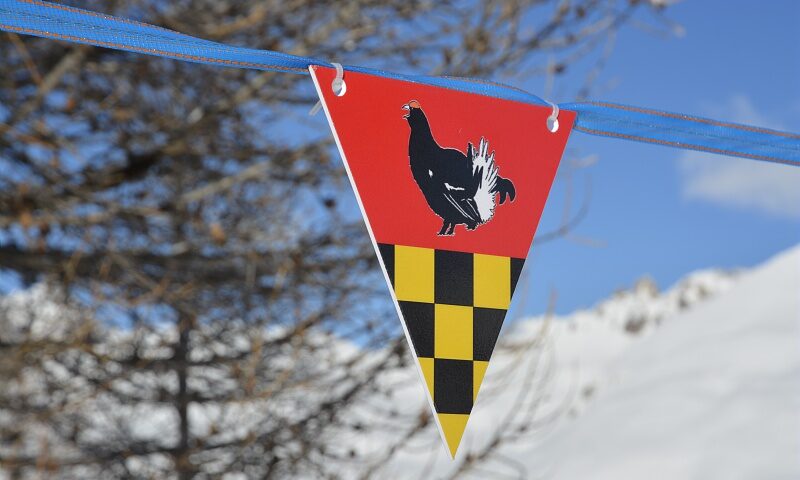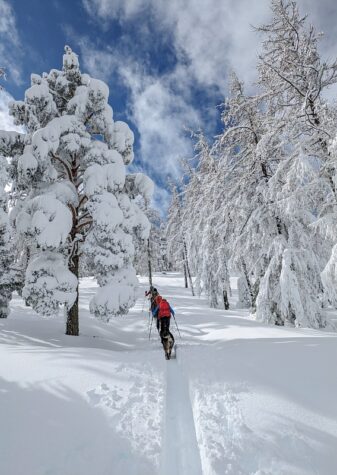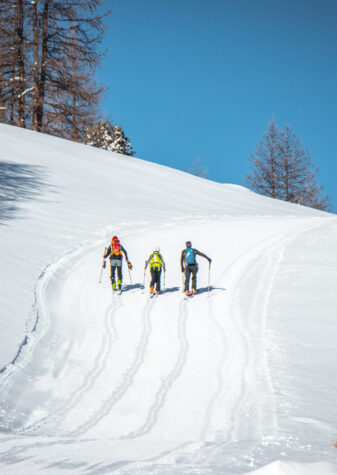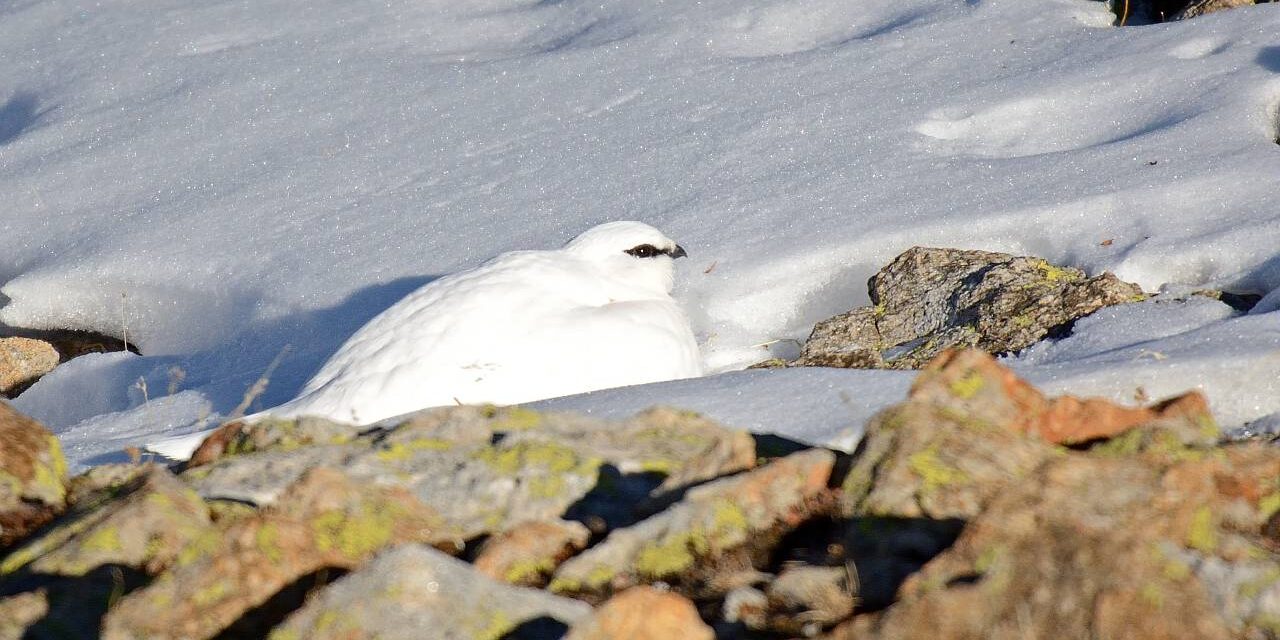
Discover winter wildlife
In Pra Loup, winter transforms the mountains into a vast adventure playground. Ski touring, split-boarding or snowshoeing outings offer timeless moments: cottony silence, immaculate valleys, encounters with nature… But for some of the residents of these heights, this season is anything but a walk in the park. It is even a question of survival.
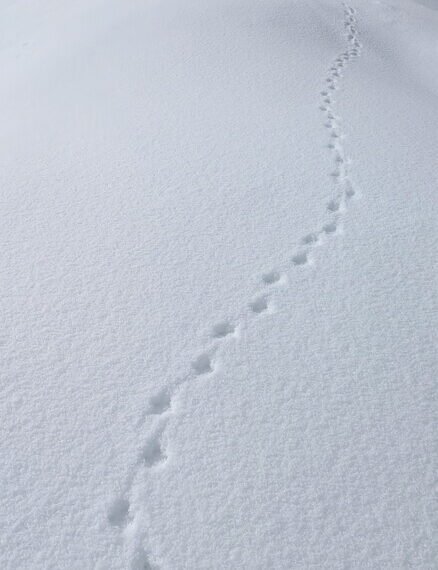
Ubaye & Mercantour, preserved territories
Even if they are not always seen, there are many animals living in the forests, mountain pastures and wild slopes of the Ubaye and the Mercantour National Park. During your winter outings, you may be lucky enough to come across chamois, ibex, or even to surprise an ermine leaping in the snow. Higher up, the shadow of a golden eagle or bearded vulture can pass over you, while in quiet forests, mountain hare, fox or deer sometimes leave telltale tracks in the snow.
But most of the time, these animals prefer to stay at a distance. And that’s normal: they spotted you long before you saw them. Their survival depends on this discretion. Observing a track, hearing a distant cry, or simply feeling their presence, is already a beautiful encounter. And it’s even stronger when you know that you didn’t bother them.
The black grouse, inhabiting dicret
The black grouse is a bit like the ghost of high-altitude forests. You probably won’t see him, but if you get too close to him, he’ll see you – and run away. And that’s the problem.
In winter, this emblematic bird settles in quiet areas, often between 1,500 and 2,000 meters above sea level. It shelters under snow-laden branches, where it can stay warm, protected from the wind and prying eyes.
The black grouse is programmed to hardly move during the winter. His metabolism slows down, and each sudden flight causes him to lose a precious amount of energy. If it is disturbed several times during the day, it can literally become exhausted. And the winter is long, very long for him.
Another concern: in spring, the males begin a spectacular courtship display, called “the crowing of the heather”. For it to take place, you need calm, otherwise the females flee. Fewer matings means fewer young grouse the following year… and a species that is declining, discreetly but surely.
The rock ptarmigan, master of camouflage
The rock ptarmigan is a bird that is sometimes called the “snow partridge”. And for good reason: in winter, it literally transforms. Its plumage turns white, its legs are covered with thick feathers to walk on the snow, and it blends in perfectly with the scenery. Almost invisible to the naked eye.
It lives in high-altitude areas, above the forest, where the wind sculpts snowdrifts and humans are scarce. In case of extreme cold, he can even dig a kind of igloo in the snow to shelter for hours. It’s his way of getting through the winter: by saving everything, including his movements.
But he has a weak point: inconvenience. If he is surprised, he flies away suddenly, flapping his wings loudly, and this can cost him dearly. He draws on his meagre reserves, accumulated by dint of immobility. And sometimes, it is forced to leave a good shelter for a less favorable one, exposed to the cold or predators.
In addition, his camouflage works especially when he remains stationary. When you approach without seeing it, you can almost step on it. He then flew away at the last second, panicked. If this happens too often, it can be fatal.
Refuge areas
Some areas are forbidden to leave the animals alone. Even if you don’t see them, they’re there.
These areas have been defined with the teams of the Mercantour National Park, which ensures the preservation of the exceptional wildlife of our territory.
Before leaving, take a look at the map of protected areas. It’s simple, and it changes everything for them.
